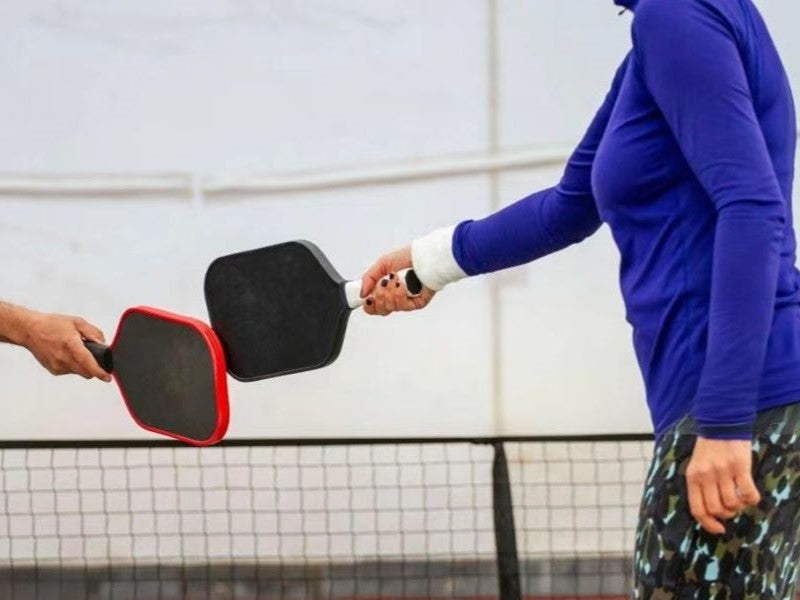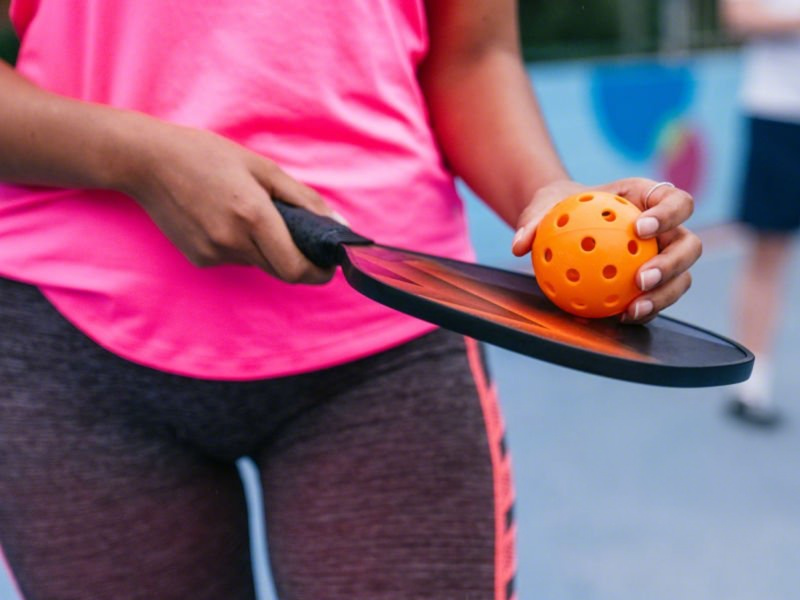Pickleball continues to grow in popularity, and with its rapid expansion, players are asking one key question: Should you use outdoor or indoor pickleballs? The answer isn’t one-size-fits-all. It depends on your playing environment, style, and priorities in terms of performance and durability. Next, let’s explore.
Why the Right Pickleball Matters
Whether you’re a casual player or a competitive athlete, the type of pickleball you choose can significantly impact your game. Outdoor and indoor pickleballs are engineered differently to suit their specific environments, and understanding these differences will help you make an informed decision. In this article, we’ll cover everything from the materials and design to the gameplay effects, so you can choose the perfect ball for your needs.
What Are Outdoor Pickleballs?
Outdoor pickleballs are designed to withstand the challenges of playing in open-air conditions. When you take your game outside, factors such as wind, temperature fluctuations, and rougher surfaces come into play. Here’s what makes outdoor pickleballs unique:
- Durability Outdoor pickleballs are typically made with harder plastic to resist damage from rougher court surfaces and environmental elements.
- Bounce and Speed They usually have a lower bounce compared to indoor balls. The harder construction means the ball travels faster, which can be an advantage on a windy day.
- Design Features Outdoor balls often feature a smaller number of holes (usually 26) to help maintain consistent flight in windy conditions. Fewer holes mean less air resistance, allowing for a more controlled trajectory.
These features make outdoor pickleballs ideal for use on rougher, outdoor surfaces such as asphalt or concrete, where durability and speed are crucial.

What Are Indoor Pickleballs?
Indoor pickleballs are optimized for smooth, controlled play on indoor courts. The controlled environment of an indoor court—free from wind and extreme temperatures—allows for different design specifications:
- Soft Touch Indoor pickleballs are made from softer plastic, which provides a higher bounce and more control in a confined space.
- Increased Control They typically feature more holes (around 40) compared to outdoor balls. The increased number of holes creates more drag, which slows the ball down, making it easier to control on smooth indoor surfaces.
- Enhanced Flight Consistency The design of indoor pickleballs focuses on precision, ensuring that the ball behaves consistently during rallies in a controlled indoor environment.
These characteristics make indoor pickleballs perfect for gymnasiums or indoor courts, where the emphasis is on precision and controlled play rather than raw power.
Key Differences Between Outdoor and Indoor Pickleballs
Understanding the main differences between outdoor and indoor pickleballs can help you choose the right ball for your game. Here are the most important factors:
1.Material and Construction
- Outdoor Balls Constructed with a harder plastic that is more resistant to wear and tear. They are designed to handle rough surfaces and unpredictable weather conditions.
- Indoor Balls Made from softer, more flexible plastic that allows for a higher bounce and better control on smooth indoor surfaces.
2. Number of Holes
- Outdoor Balls Generally have around 26 holes. Fewer holes mean less air resistance, leading to faster flight and a lower bounce.
- Indoor Balls Typically feature around 40 holes. More holes create increased drag, slowing the ball down and making it more manageable on indoor courts.
3. Bounce and Speed
- Outdoor Balls Lower bounce and faster speed, suitable for outdoor conditions where wind and hard surfaces affect the ball’s flight.
- Indoor Balls Higher bounce and slower speed, offering more control in the predictable conditions of indoor play.
4. Durability
- Outdoor Balls Built to be more durable, capable of withstanding the abrasive nature of outdoor courts and variable weather.
- Indoor Balls While still durable, they are not designed for the harsher conditions of outdoor play and might wear out faster if used outside.
5. Environmental Impact
- Outdoor Balls The harder plastic may be slightly less forgiving on impact, but it’s engineered to handle outdoor elements.
- Indoor Balls Their softer construction ensures a consistent performance indoors but might not hold up as well in outdoor environments.
Which One Should You Choose?
Your decision between outdoor and indoor pickleballs should be based on where you play most frequently and your personal playing style.
For Outdoor Players:
- Choose Outdoor Pickleballs if you play on rough surfaces like asphalt or concrete, or if you often play in windy or unpredictable weather conditions. Their durability and lower bounce help maintain performance outdoors.
- Consider the Speed If you’re an aggressive player who likes to drive the ball, outdoor balls will complement your style due to their faster speed.
For Indoor Players:
- Choose Indoor Pickleballs if you primarily play in a gym or indoor court with smooth surfaces. Their higher bounce and increased control make them ideal for tactical, precision play.
- Focus on Control Indoor balls are perfect for players who value shot placement and consistency over sheer speed.
For Mixed-Environment Players:
- Dual Use Considerations If you find yourself playing both indoors and outdoors, it might be wise to invest in both types of pickleballs. Use indoor balls for the controlled environment of indoor courts and outdoor balls when the elements come into play.
- Practice with Both Getting comfortable with both types can improve your adaptability, as you’ll be able to adjust your game based on the conditions.

Additional Considerations When Choosing a Pickleball
Beyond the basic differences, there are a few extra factors to consider when selecting the perfect pickleball for your needs:
1. Skill Level and Playing Style
Your skill level might influence which ball works best for you. Beginners may find indoor balls more forgiving due to their higher bounce and slower pace, allowing them to focus on developing consistent shots. Advanced players might prefer outdoor balls for their speed and lower bounce, which can add an extra layer of challenge and strategy.
2. Ball Maintenance and Longevity
Outdoor pickleballs tend to be more durable, meaning they will last longer if you play in rough conditions. However, if you’re in an indoor league, the soft construction of indoor balls may wear out more quickly if misused outdoors. It’s important to match your ball type with your playing environment to ensure you get the most out of your investment.
3. Price and Availability
Price differences between indoor and outdoor pickleballs are usually minimal, but availability might vary depending on your location and the stores you frequent. Some retailers may offer multi-packs or bulk discounts, which can be beneficial if you play regularly. Always check reviews and product specifications to ensure you’re getting a quality ball that suits your needs.
Tips for Maintaining Your Pickleballs
No matter which type of pickleball you choose, proper maintenance can extend the life of your balls and keep them performing at their best:
- Regular Cleaning Wipe your balls with a damp cloth after play to remove dirt and debris. For outdoor balls, this is especially important to remove sand and grime.
- Proper Storage Store your pickleballs in a cool, dry place away from direct sunlight. Excessive heat can warp the plastic, affecting the ball’s bounce and flight.
- Rotate Your Balls If you play frequently, rotate between several balls to ensure even wear and prolong their lifespan.
- Avoid Overuse in the Wrong Environment Use indoor balls only in indoor settings and outdoor balls for outdoor play. This helps preserve the specific design characteristics of each type.
Choosing between outdoor and indoor pickleballs isn’t just about the ball’s material or the number of holes—it’s about matching the right tool to your environment and playing style. Outdoor pickleballs excel in durability and speed, making them ideal for challenging, weather-exposed courts. Indoor pickleballs, on the other hand, offer enhanced control and a higher bounce, perfect for precise, tactical play on smooth indoor surfaces.



Leave a comment
This site is protected by hCaptcha and the hCaptcha Privacy Policy and Terms of Service apply.